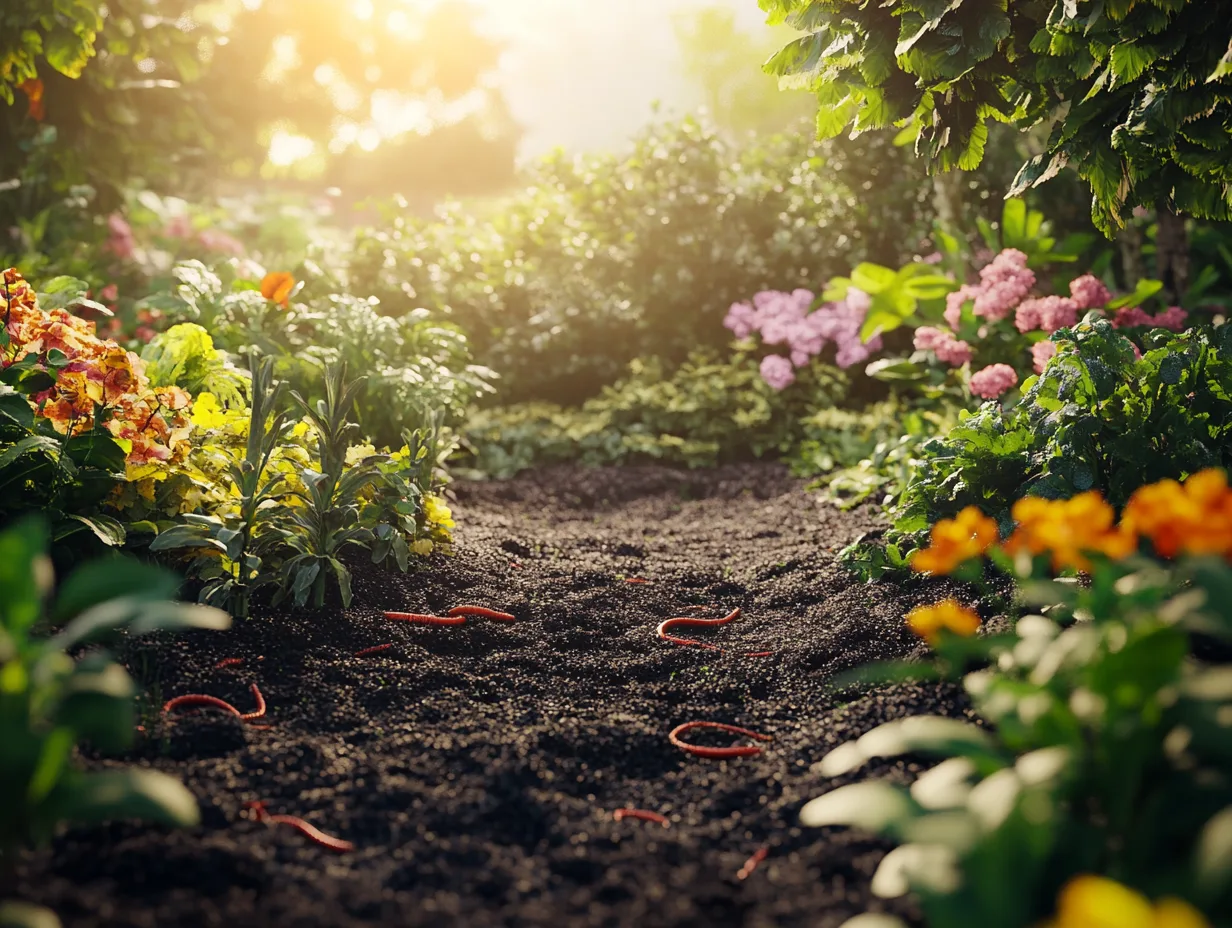How to Restore Soil Health Naturally
In today’s eco-conscious world, gardeners are increasingly turning to Regenerative Gardening to rebuild and rejuvenate soil naturally. By adopting practices that mimic nature’s cycles, you can transform tired, depleted soil into a vibrant, living ecosystem that not only supports robust plant growth but also sequesters carbon and promotes biodiversity. This post delves into the science behind soil health, explores actionable techniques, and provides practical tips to create a garden that thrives sustainably.
Gardening is evolving beyond merely growing plants—it’s about nurturing the earth itself. Traditional gardening often focuses on short-term yields, but regenerative methods work to restore soil structure, increase organic matter, and foster a thriving microbial community. These practices yield long-lasting benefits, ensuring that your garden remains resilient against pests, droughts, and other challenges while reducing reliance on synthetic chemicals.
Understanding the Concept of Regenerative Gardening
Regenerative Gardening is more than just a trend; it’s a comprehensive approach that integrates environmental stewardship with practical garden management. This method focuses on rebuilding soil fertility, enhancing water retention, and increasing organic matter through techniques that work in harmony with nature.
What Sets It Apart from Conventional Gardening?
Unlike conventional gardening—which may rely heavily on chemical fertilizers and pesticides—regenerative practices prioritize the health of the soil as the foundation for plant growth. Here are some key distinctions:
- Soil Focus: Regenerative gardening emphasizes soil biology and structure, promoting long-term fertility.
- Sustainability: These techniques reduce chemical inputs, lower water consumption, and protect natural resources.
- Biodiversity: By encouraging diverse plantings and beneficial organisms, regenerative systems create a balanced ecosystem.
The Science Behind Soil Health
Healthy soil is teeming with life. Beneath the surface, billions of microorganisms—bacteria, fungi, protozoa, and nematodes—work together to break down organic matter and release essential nutrients. This natural process not only nourishes plants but also improves soil structure and water retention.
The Role of Soil Microorganisms
Soil microorganisms are the unsung heroes of Regenerative Gardening. They perform several vital functions:
- Decomposition: Breaking down organic material to release nutrients.
- Nutrient Cycling: Transforming organic compounds into plant-accessible forms.
- Soil Structure Improvement: Producing compounds that help bind soil particles together, creating a porous, stable structure.
For more detailed scientific insights, consider reviewing resources from the USDA Natural Resources Conservation Service.
Effective Techniques to Enhance Soil Fertility
Adopting regenerative practices can reinvigorate your garden’s soil, setting the stage for robust plant growth. Here are some effective techniques:
- Composting: Convert kitchen scraps and garden waste into nutrient-rich compost to feed your soil.
- Cover Crops: Plant cover crops during off-seasons to prevent erosion, fix nitrogen, and add organic matter.
- Crop Rotation: Alternate different crops to disrupt pest cycles and maintain balanced nutrient levels.
- Organic Amendments: Incorporate materials like manure, biochar, and green manure to boost soil fertility.
- Reduced Tillage: Minimize soil disturbance to preserve soil structure and protect microbial habitats.
- Mulching: Use organic mulches to retain moisture, suppress weeds, and gradually enrich the soil.
Benefits of Organic Amendments
Organic amendments not only add essential nutrients but also improve the physical structure of the soil. They enhance water retention, promote beneficial microbial activity, and help buffer pH levels, creating a favorable environment for plant roots.
Implementing Regenerative Practices in Your Garden
Transitioning to a regenerative system requires careful planning and gradual implementation. Here’s a step-by-step guide to help you get started:
- Assess Your Soil Health: Begin by testing your soil for pH, nutrient levels, and organic matter content. Local cooperative extension services often offer testing kits.
- Develop a Regenerative Plan: Outline which practices will best address your soil’s deficiencies. This may include composting, cover cropping, and reduced tillage.
- Introduce Cover Crops: Plant cover crops such as clover or rye during the off-season. These crops protect the soil from erosion and add nitrogen.
- Apply Organic Compost: Enrich your garden beds with a thick layer of well-aged compost. This will boost microbial activity and improve soil texture.
- Monitor Soil Moisture: Use efficient irrigation techniques to maintain optimal moisture levels without waterlogging the soil.
- Encourage Biodiversity: Introduce a variety of plants to create a balanced ecosystem that naturally deters pests and diseases.
Practical Tips for Home Gardeners
- Start Small: If you’re new to regenerative gardening, begin with a small section of your garden before expanding your practices.
- Keep a Garden Journal: Record changes in soil texture, plant health, and pest occurrences to refine your approach over time.
- Seek Community Support: Join local gardening groups or online forums where you can share experiences and learn from others who practice regenerative gardening.
Water Management for Regenerative Gardens
Effective water management is crucial for maintaining healthy soil. Overwatering can lead to root rot and nutrient leaching, while underwatering may cause plants to become stressed and susceptible to disease.
Efficient Irrigation Techniques
Implementing efficient irrigation systems is key to sustainable water use:
- Drip Irrigation: Delivers water directly to the root zone, minimizing evaporation and runoff.
- Soaker Hoses: Provide a gentle, steady flow of water to garden beds.
- Rainwater Harvesting: Collect rainwater for irrigation to reduce reliance on municipal water supplies.
For further details on water conservation techniques, check out our Efficient Watering Techniques article.
Integrated Pest Management in Regenerative Systems
A cornerstone of regenerative gardening is minimizing chemical inputs. Integrated Pest Management (IPM) combines biological, cultural, and mechanical strategies to control pests naturally.
Natural Pest Control Solutions
Here are some strategies to manage pests without resorting to synthetic chemicals:
- Encourage Beneficial Insects: Attract predators such as ladybugs, lacewings, and predatory beetles that feed on common garden pests.
- Companion Planting: Grow pest-repelling plants alongside your vegetables to create a natural barrier against infestations.
- Use Organic Pesticides: When necessary, opt for organic solutions like neem oil or insecticidal soap.
A well-structured IPM plan not only reduces pest pressure but also fosters a more balanced ecosystem in your garden.
Encouraging Biodiversity for a Thriving Garden
Biodiversity is the bedrock of a resilient garden. By cultivating a diverse array of plants and microorganisms, you can create a self-sustaining ecosystem that resists diseases and adapts to changing conditions.
How Biodiversity Benefits Soil Health
- Enhanced Nutrient Cycling: Different plants contribute various organic compounds to the soil, promoting robust microbial activity.
- Pest and Disease Resistance: A diverse plant population can break pest cycles, reducing the likelihood of widespread infestations.
- Improved Resilience: Biodiversity increases the overall resilience of your garden, making it better able to cope with environmental stressors such as drought or heavy rains.
Integrate native species and a mix of annuals and perennials to create a balanced and thriving garden ecosystem.
Overcoming Common Challenges in Regenerative Gardening
While the benefits of regenerative gardening are immense, gardeners often face challenges when transitioning from conventional methods. Here are some common hurdles and how to overcome them:
Dealing with Poor Soil Quality
- Soil Testing: Begin with a comprehensive soil test to determine nutrient deficiencies and pH imbalances.
- Amend Gradually: Introduce organic amendments slowly to avoid shocking the ecosystem.
- Cover Crops: Use cover crops to protect the soil during the recovery phase.
Managing Pests Without Chemicals
- Preventive Measures: Employ crop rotation and companion planting to deter pests naturally.
- Biological Controls: Introduce natural predators and beneficial insects to maintain a balanced ecosystem.
- Regular Monitoring: Keep a close eye on pest populations and act early to prevent infestations.
By addressing these challenges with practical strategies, you can create a sustainable garden that flourishes over time.
Future Trends in Regenerative Gardening
As environmental awareness grows, regenerative gardening continues to evolve with innovative practices and technologies. Here are some emerging trends that are shaping the future of sustainable gardening:
Innovative Technologies and Practices
- Precision Agriculture: The use of sensors and data analytics to monitor soil health and optimize resource usage.
- Biochar Application: Incorporating biochar—a form of charcoal produced from plant matter—can enhance soil fertility and sequester carbon.
- Vertical Gardening: For urban spaces, vertical gardening offers a way to maximize limited space while practicing regenerative techniques.
- Smart Irrigation Systems: Automated systems that adjust water delivery based on real-time soil moisture data can significantly enhance water efficiency.
These innovations are making it easier for gardeners of all levels to adopt regenerative practices and contribute to a healthier planet.
A Sustainable Approach to Garden Management
Adopting Regenerative Gardening is not just a way to improve your garden—it’s a commitment to a sustainable future. By focusing on soil health, water conservation, and biodiversity, you are taking proactive steps to combat climate change and restore natural ecosystems.
Transitioning to regenerative practices may require some upfront effort, but the long-term benefits are well worth it. You’ll enjoy healthier plants, a more resilient garden, and the satisfaction of knowing that you’re contributing to the well-being of the environment.
For those who are eager to dive deeper into sustainable gardening practices, remember that every small change adds up. Whether you’re starting with a single garden bed or planning a larger landscape overhaul, the principles of regenerative gardening provide a roadmap for creating a thriving, sustainable ecosystem.
As you embark on this journey, consider these final tips:
- Educate Yourself: Stay informed by reading up-to-date resources and joining local gardening groups.
- Experiment: Not every technique will work perfectly in every garden. Test different approaches and adapt them to suit your local conditions.
- Share Your Knowledge: Encourage others to adopt regenerative practices. The more people who participate, the larger the impact on our collective environment.
Incorporate regular soil tests, keep track of your garden’s progress, and adjust your methods as needed. Over time, you’ll notice improvements in soil texture, increased water retention, and healthier, more robust plant growth. This holistic approach not only benefits your garden but also sets a powerful example for sustainable living.
For further insights and advanced techniques, explore the comprehensive guide in The Year-Round Vegetable Garden for Beginners.


Leave a Reply